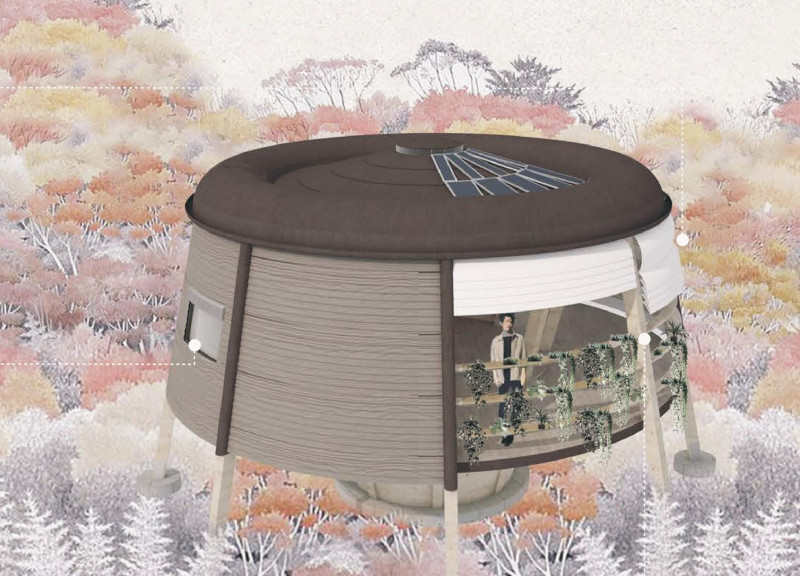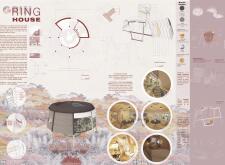5 key facts about this project
GringHouse is a microhome designed to cater to the needs of professionals who desire a close connection to nature. Located in a setting that allows for adaptability in both northern and southern hemispheres, it addresses modern living requirements through a compact and efficient layout. The design emphasizes flexibility, allowing for different room arrangements based on local climate conditions. This focus on well-being aligns with the intention to create a pleasant living environment.
Structural Adaptability
The home features a central core that acts as a utility room for essential systems, maximizing space use effectively. Surrounding this core, the mezzanine floor includes various living functions, creating a compact yet versatile living area. A circular layout facilitates adequate natural light, enhancing the interior atmosphere. An open terrace serves both as an entrance and recreational space, encouraging interaction with the outdoors and reinforcing the design's emphasis on connectivity.
Materiality and Sustainability
A selection of materials is used to ensure the home is durable and environmentally friendly. Zintek, a titanium-zinc alloy, is utilized for external panels and drainpipes, offering longevity against the elements. Cedral, an ecological fibre cement, is integrated for slats and as part of the waterproofing system. Insulation needs are met with wood fibre products, providing thermal efficiency crucial for small living spaces. The cross-laminated timber system supports the structure and provides a modern finish that reflects sustainable construction practices.
Vertical Integration of Greenery
One specific aspect of GringHouse is its inclusion of vertical gardens between the arches of the terrace. This feature enhances the ecological focus of the design and supports biodiversity while connecting occupants to nature. The presence of greenery contributes to a calming atmosphere within the living space, improving the overall experience for residents.
The design implementation balances form and material choices to create a living environment that values comfort and respect for the natural landscape. Every element is thoughtfully chosen to enhance daily living while being mindful of its ecological impact.



















































